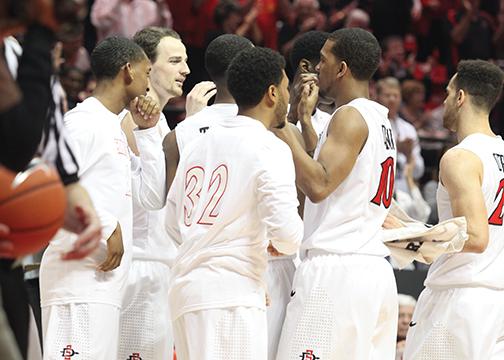
Our culture is so fascinated with getting simple answers to complex problems. Take “The Hitchhiker’s Guide to the Galaxy,” for example. According to Douglas Adams’ marvelous work, what is the answer to life, the universe and everything? Forty-two.
What?
OK, if you read the book you’ll find people are very upset with that answer, but it’s the thought that matters here. People are generally obsessed with quantifying things.
This is why people love metrics in sports. There happens to be quite of few of them, like wins above replacement in baseball, which aggregates a number of individual statistics and calculates a supposedly true value of that player to a team’s win total.
In football there’s the quarterback rating, which again, tries to quantify the overall performance of a quarterback.
In NCAA men’s basketball there’s the ratings percentage index.
It’s used to try to quantify a true ranking of a basketball team because, hey, the humans who vote in the Associated Press Top 25 poll every week are obviously too subjective to get a create a true ranking. The NCAA Tournament selection committee takes RPI into serious consideration come tournament time.
RPI is a joke. Why? Let’s look at San Diego State’s 74-56 win against San Jose State University on Saturday. SDSU was favored by 21 points, but as of Sunday, a 18-point win dropped the Aztecs’ RPI from 19 to 24.
Let me add how poorly SJSU is playing this season. The Spartans are 2-24 and haven’t beaten an NCAA Division I team. Much of that is due to the fact that they only have eight healthy players.
SDSU isn’t the only team who has caught the SJSU bug.
Colorado State University had an RPI of 29 going into its game against SJSU. The Rams won by 29 points and ended up with an RPI of 38.
Boise State University’s RPI before SJSU? Fifty. After bludgeoning the Spartans by 50? Down to 66.
University of Nevada, Las Vegas went from 60 all way the down to 84 after thumping SJSU by 34. University of New Mexico’s RPI went from 99 to 111 after a 26-point win.
Remarkably enough, SJSU’s loss to SDSU on Saturday night put the Spartans up from 337 to 335 as of Sunday.
I understand the math of the system. It looks at a team’s win percentage, the team’s opponents’ win percentage, the opponent’s opponents’ win percentage, crams it into a formula and plops out a number that’s less than one.
So by that measure, beating a bad team will drag down your RPI no matter how big you win. Even if you cover the point spread, even if you beat them by 50, even if you win by one. It doesn’t matter.
But I can’t understand why people put faith into a system that punishes teams for winning games they’re supposed to win.
What’s worse about these numbers is that RPI-worshipping humans still, for now, make up the NCAA Tournament selection committee.
The Aztecs dropping to 24 doesn’t really hurt their chances for the tournament, but RPI can hurt other teams.
Generally, teams with an RPI under 60 are long shots to get an at-large bid in the big dance, so why should they be punished for dominating a game or two in which the other team is trash? Those are games good teams are supposed to win.
Here’s a suggestion: Incorporate the point spread and margin of victory into RPI. So if a team such as SDSU was supposed to win by 21 points and won by two, you could factor that in. Or if the Aztecs win a game by 50 against a team they were predicted to lose against, incorporate that and make the system a little more realistic.
For now, just put your trust into the 65 writers that make up the AP Top 25 voters.
They realize the circumstances of a basketball game that a simple “W” or “L” won’t tell you, or that RPI can’t tell you.






